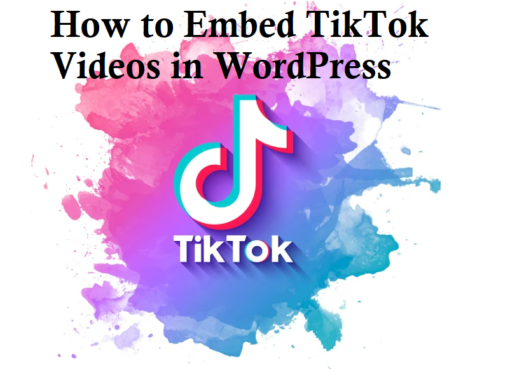What is ChatGPT? Exploring the Power of Conversational AI

In today’s digital age, artificial intelligence (AI) has revolutionized the way we interact with technology. ChatGPT, powered by OpenAI’s GPT-3.5 architecture, is a remarkable example of how AI has advanced natural language processing and conversation. In this article, we will delve into the world of ChatGPT, understanding its capabilities, applications, and the benefits it offers to various industries.
1. Understanding ChatGPT:
ChatGPT is an advanced language model developed by OpenAI. It is designed to generate human-like responses based on the context provided in a conversation or prompt. By training on a vast amount of diverse data, ChatGPT has learned to mimic human language patterns and generate coherent and contextually relevant responses.
2. How ChatGPT Works:
ChatGPT leverages a deep learning model called a transformer. This model processes input text and generates output based on the patterns it has learned during training. It uses attention mechanisms to understand the relationships between words and generate meaningful responses. The extensive training allows ChatGPT to exhibit a high degree of language understanding and generate conversational responses that feel natural and human-like.
3. Applications of ChatGPT:
ChatGPT finds application in various domains, bringing value to different industries. Some notable applications include:
3.1 Customer Support: Companies can employ ChatGPT as a virtual assistant to handle customer queries and provide instant support. With its ability to understand and respond to user queries, it can enhance customer satisfaction and streamline support processes.
3.2 Content Generation: ChatGPT can assist content creators by generating ideas, suggesting improvements, and even helping with the writing process. It can save time and provide valuable insights for creating engaging and informative content.
3.3 Language Translation: The language understanding capabilities of ChatGPT make it a valuable tool for translation services. It can translate text from one language to another while maintaining the context and tone, aiding in breaking down language barriers.
3.4 Personal Assistants: With the advancements in voice recognition technology, ChatGPT can be integrated into personal assistant applications. Users can interact with their devices in a conversational manner, getting assistance and information with ease.
4. Benefits of ChatGPT:
4.1 Enhanced Efficiency: ChatGPT’s ability to automate tasks and generate accurate responses at scale can significantly enhance efficiency in various processes, reducing manual effort and saving time.
4.2 Improved Customer Experience: Implementing ChatGPT in customer support systems allows for faster response times and personalized interactions. This leads to improved customer satisfaction and loyalty.
4.3 Accessible Knowledge: ChatGPT provides instant access to vast amounts of information. It can retrieve relevant data, answer queries, and assist users in their search for knowledge, making information more accessible and convenient.
Conclusion:
ChatGPT, an impressive conversational AI model, has opened up new possibilities in natural language processing. Its ability to generate contextually relevant and human-like responses has found applications across industries, transforming customer support, content generation, translation services, and personal assistants. As AI technology continues to evolve, ChatGPT represents a significant step towards creating intelligent systems that understand and communicate with humans effectively. Embracing the power of ChatGPT can unlock numerous benefits, driving efficiency, improving customer experience, and enabling easier access to information in our increasingly digital world.
Frequently Asked Questions (FAQs)
What is ChatGPT?
ChatGPT is an advanced language model developed by OpenAI. It leverages artificial intelligence to generate human-like responses in conversations or prompts.
How does ChatGPT work?
ChatGPT employs a deep learning model called a transformer, which processes input text and generates contextually relevant output. It uses attention mechanisms to understand word relationships and generate coherent responses.
What are the applications of ChatGPT?
ChatGPT finds applications in various domains. It can be used for customer support, content generation, language translation, and personal assistants, among other things.
Can ChatGPT handle customer queries?
Yes, ChatGPT can be employed as a virtual assistant for customer support. It understands user queries and provides instant responses, enhancing customer satisfaction.
How can ChatGPT assist content creators?
Content creators can utilize ChatGPT to generate ideas, suggest improvements, and even assist in the writing process. It saves time and provides valuable insights for creating engaging content.
Is ChatGPT useful for translation services?
Absolutely! ChatGPT’s language understanding capabilities make it an excellent tool for translation. It can accurately translate text while maintaining context and tone.
Can ChatGPT be integrated into personal assistant applications?
Yes, with advancements in voice recognition technology, ChatGPT can be integrated into personal assistant applications. Users can interact with their devices conversationally and receive assistance and information.
What are the benefits of using ChatGPT?
Some benefits of ChatGPT include enhanced efficiency, improved customer experience, and easy access to knowledge. It automates tasks, provides faster responses, and enables convenient information retrieval.
Is ChatGPT suitable for businesses?
Yes, businesses can leverage ChatGPT to streamline processes, enhance customer support, and generate high-quality content. It offers a competitive edge and improves overall operations.
How does ChatGPT contribute to the future of AI?
ChatGPT represents a significant advancement in natural language processing and conversational AI. It paves the way for intelligent systems that effectively communicate and understand human language, shaping the future of AI technology.



Leave a Comment